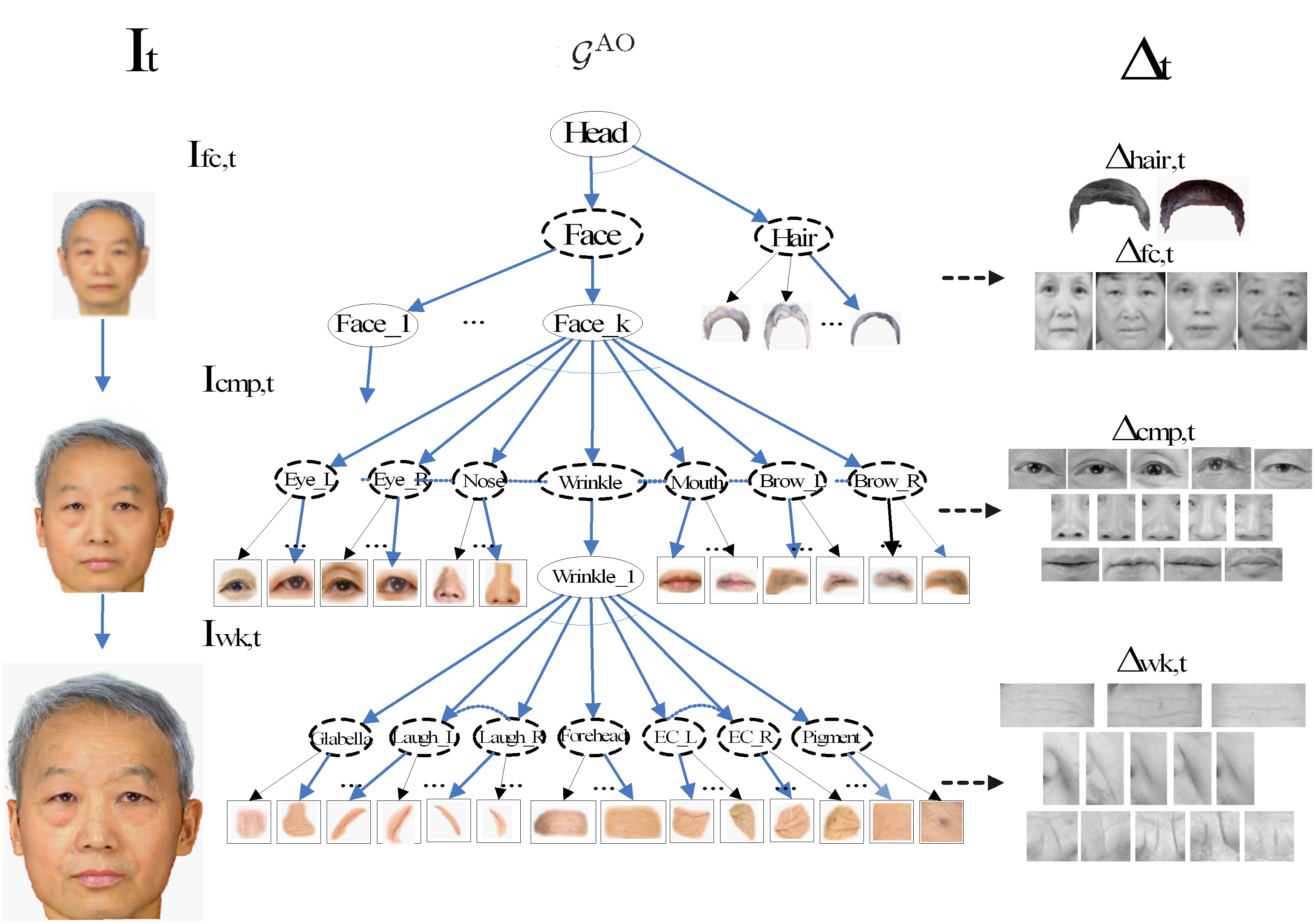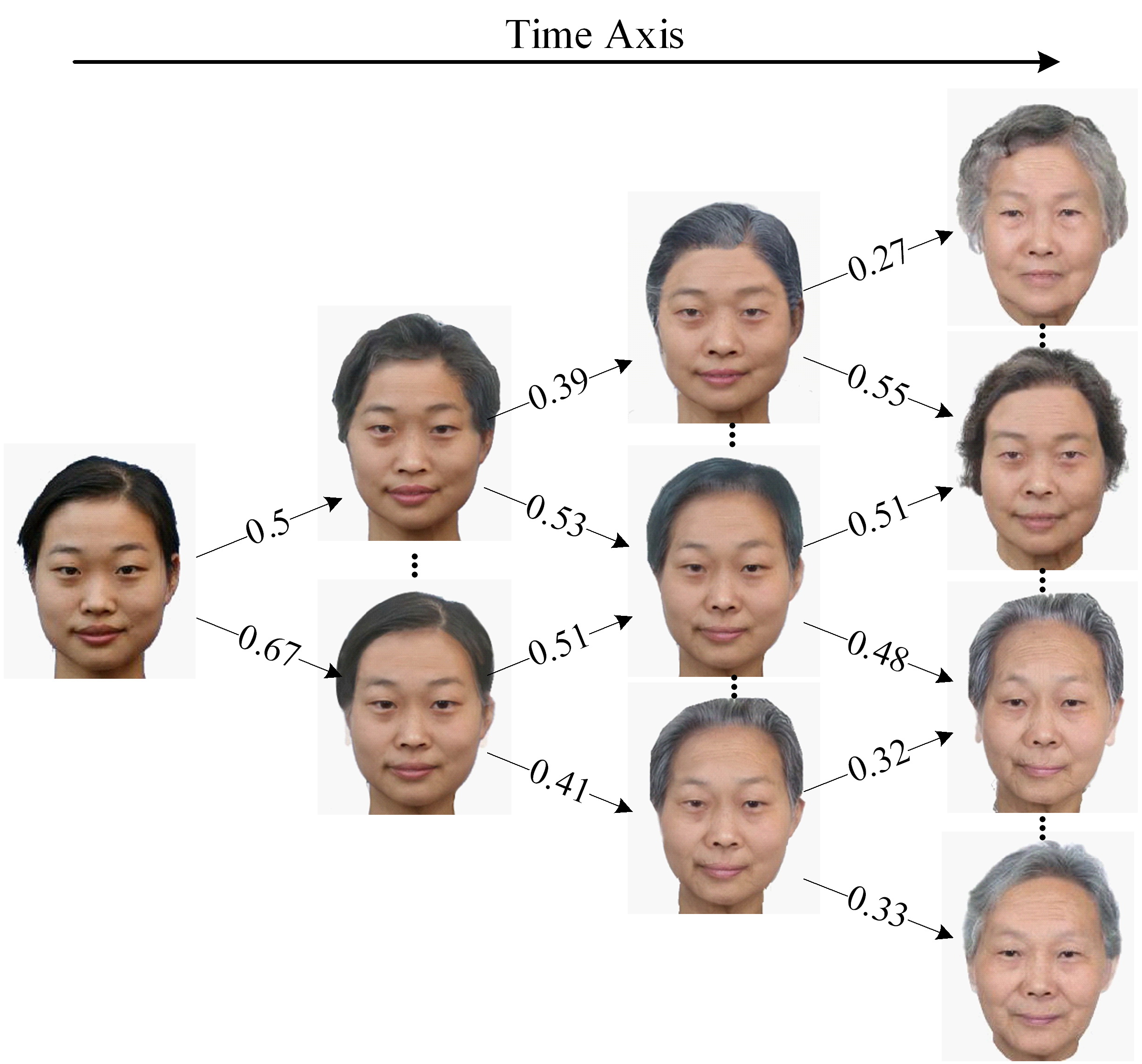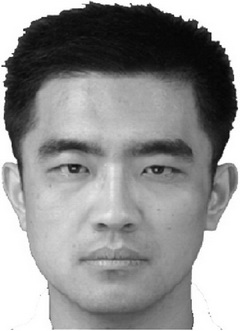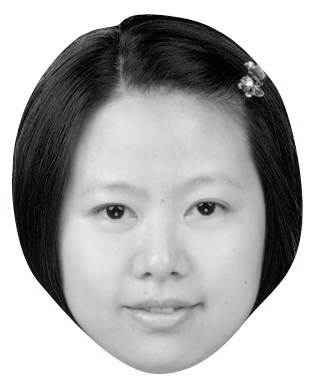A Dynamic Model for Face Aging Simulation
Jinli Suo1,3
Song-Chun Zhu1,2
Shiguang Shan3
Xilin Chen3
1Lotus Hill Institute
2University of California, Los Angeles
3Institute of Computing Technology, Graduate University of Chinese Academy of Sciences,China
1. What's the problem?
2. Our solution
| We present a compositional and dynamic model for face aging. The compositional model represents faces in each age group by a hierarchical And-Or graph, in which And nodes decompose a face into parts to describe details (e.g. hair, wrinkles, etc.) crucial for age perception and Or nodes represent large diversity of faces by alternative selections. Then a face instance is a transverse of the And-Or graph—parse graph. Face aging is modeled as a Markov process on the parse graph representation. We learn the parameters of the dynamic model from a large annotated face dataset and the stochasticity of face aging is modeled in the dynamics explicitly. Based on this model, we propose a face aging simulation and prediction algorithm. In addition, uncertainty of an intrinsic characteristic of face aging, the diversity is also model by probabilistic sampling in our algorithm. |
3. Image Representation: And-Or Graph
| In the And-Or graph, a high resolution face image at a certain age group is represented at three resolutions(see left column). All face images are represented collectively by a hierarchic And-Or graph and a specific face image is described by a tranverse of the And-Or graph, named parse graph(see middle column). Dictionary Δt includes typical templates at three levels from coarse to fine(see right column). |

4. Dynamic Model: Markov Graph Chain
| For simplicity, we decompose age range from 20 to 80 into five discrete groups: [20, 30), [30, 40), [40, 50), [50, 60) and [60-80]. Based on the above graph representation(And-Or graph) and the Markovian property of face aging, the face aging process is modeled as a 1st order Markov chain on a series of parse graphs. The dynamics of the Markov chain can be learned from a labeled face database including large varieties of faces across age groups. From the learned chain model, we can infer the face appearances at later age groups sequentially. |

5. Uncertainty of face aging
| Face aging is intrinsically uncertain due to the affects from external factors, e.g., health, life style, nutrition, etc. Similar to the Brownian motion, the uncertainty increases as time elapses. For an input young face, our algorithm generates multiple plausible aging results to illustrate the stochasticity of face aging. |

6. Some simulation results
| Input Image | Synthetic | Synthetic | Synthetic | Synthetic | ||
| [20, 30) | [30, 40) | [40, 50) | [50, 60) | [60, 80] | ||
|
Asian male: |

|

|

|

|

|
|
|
Asian female: |

|

|

|

|

|
|
|
Caucasian male: |

|

|

|

|

|
|
|
African-American male: |

|

|

|

|

|
7. Publications
|
[1] Jinli Suo, Feng Min, Song-Chun Zhu, Shiguang Shan and Xilin Chen, "A Multi-Resolution Dynamic Model for Face Aging Simulation", accepted by Computer Vision and Pattern Recognition(CVPR)'07.
[PDF]
[2] Jinli Suo, Song-Chun Zhu, Shiguang Shan and Xilin Chen, "A Compositional and Dynamic Model for Face Aging", accepted by IEEE Trans. Pattern Analysis and Machine Intelligence(TPAMI)'09. [PDF] |
References
|
[1] Zijian Xu, Hong Chen, Song-Chun Zhu and Jiebo Luo, "A hierarchical compositional model for face representation and
sketching," IEEE Trans. Pattern Analysis and Machine Intelligence(PAMI)'08.
[2] Hong Chen and Song-Chun Zhu, "A generative sketch model for human hair analysis and synthesis", accepted by IEEE Trans. Pattern Analysis and Machine Intelligence(TPAMI)'06. |